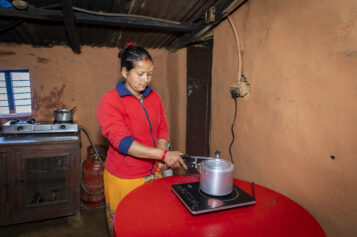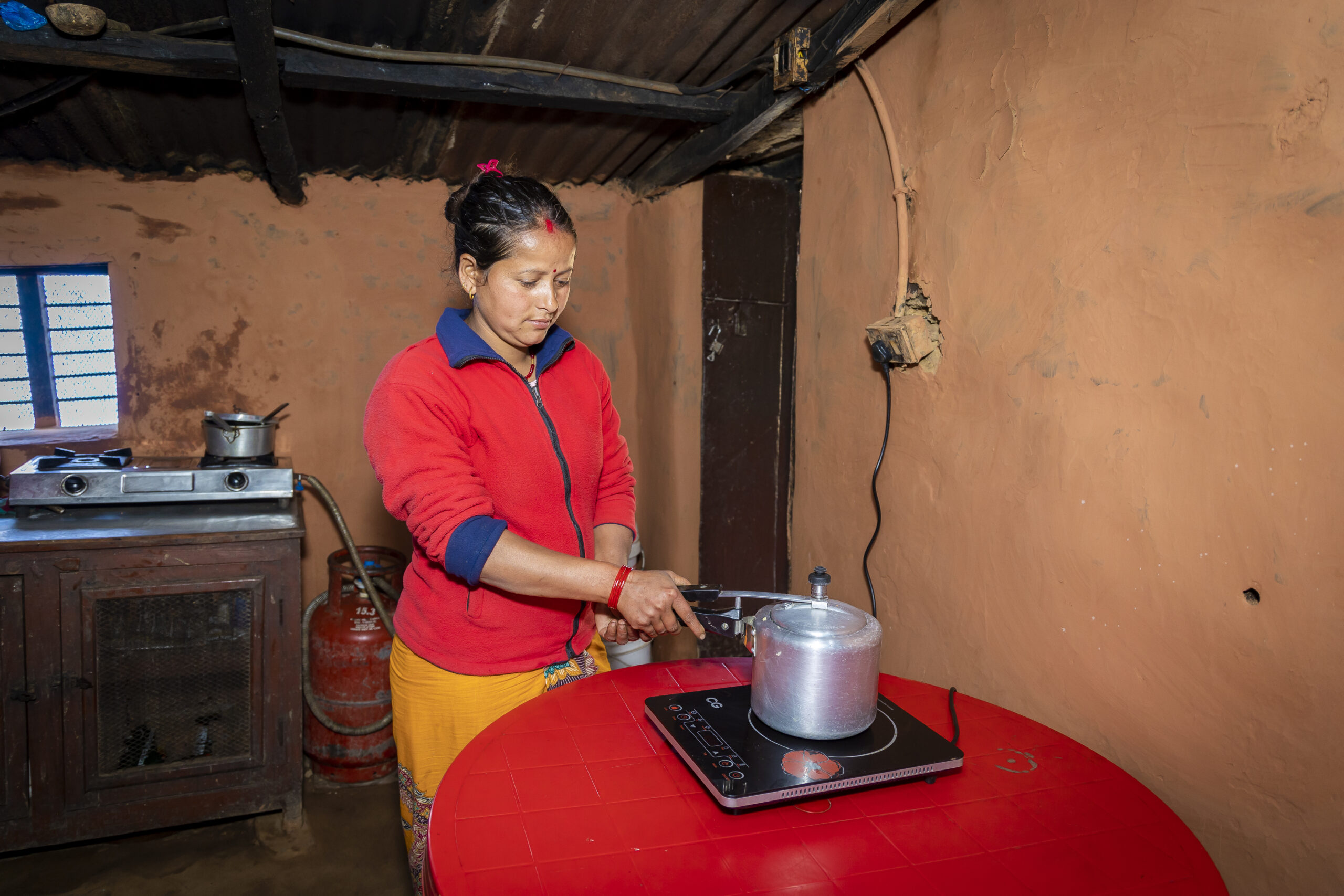
19.5M (65%)
Clean cooking population without access (WHO, 2021)
8
Active clean cooking ventures (Source: CCA)
1
Number of clean cooking RBF (Source: CCA)
The Government of Nepal (GoN) is committed to achieving universal access to clean cooking by 2030. The GoN has set ambitious targets to achieve this goal, including ensuring that 25% of households nationwide adopt electric cooking by 2030.
According to World Bank data, there is a high demand for clean cooking solutions in Nepal due to the health impacts associated with traditional cooking practices. However, only 35.2% of the population had access to clean fuels and technologies for cooking in 2021, up from 28.05% in 2015. There is also a significant urban-rural divide in access, with 63.4% of the urban population having access compared to just 22.1% of the rural population.
Click ‘Read more’ to explore the data from World Bank.
Click ‘Read more’ to explore the relevant aspects of Nepal’s Nationally Determined Contributions and other current policies that are relevant to clean cooking, including import duties.
Nationally Determined Contributions
Nepal’s enhanced NDC aims to leverage its hydropower potential to increase domestic renewable energy generation from 1,400MW to 15,000MW.11 The targets related to increased renewable energy production and replacement of LPG with ECs and biogas are synergistic with Nepal’s enhanced NDC targets for the clean cooking sector, which are: (1) use primarily EC in 25% of households by 2030, (2) install 500,000 improved cookstoves in rural areas by 2025, and (3) install 200,000 household biogas plants and 500 large scale biogas plants by 2025. Combined, these three targets will reduce cooking sector emissions by 11% and 23% by 2025 and 2030, respectively.
Other Relevant Policies
The Government of Nepal (GoN) is committed to achieving universal access to clean cooking by 2030. The GoN has adopted various goals and targets to promote clean cooking, especially electric cooking as shown in the figure below. The GoN also provides conditional grants to all provincial and local governments for renewable energy, including clean cooking, every year as per the Inter government Fiscal Arrangement Act 2017 and the National Natural Resources and Fiscal Commission Act 2017. In 2022, the GoN accelerated its efforts toward achieving these goals and targets as the Ministry of Energy, Water Resources, and Irrigation (MoEWRI) began drafting guidelines to promote electric cooking.
Import Duties
| Item | Import Duty |
| Ethanol (and other spirits, denatured, of any strength) | Rs.10 per litre |
| Kerosene | Rs.12 per litre |
| Propane, Butane | Rs.15 per kg |
| LPG | Rs.5 per kg |
| Fuelwood, wood pellets, briquettes, sawdust and wood scrap | Rs.5 per kg |
| Charcoal (sourced from wood, shells, bamboo or nuts) | Rs.15 per kg |
| Cooking appliances (or parts) for gaseous, electric, liquid or solid fuels | Rs.10 per unit |
| Electric induction stoves | Rs.1 per unit |
Related Resources
Nepal has 20 cookstove projects registered in it. These projects have generated 0.6 million carbon credits to date.
Click ‘Read more’ to explore the dashboard.
There is one clean cooking RBF program that has operated, or is underway, in Nepal.
Click ‘Read more’ to explore the table of RBFs.
| Name | Lead | Status | Dates | Applicable Fuels | Fund size for clean cooking | Total fund size |
| RBF for low carbon energy access | EnDev | Completed | 2012-2020 | e-cooking, improved biomass, biogas | $15m | $55m |
N.B. Funding amounts may be split across multiple countries







